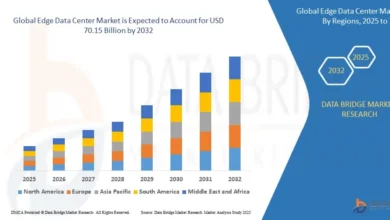Modern Website Design Practices for 2025

Modern Website Design Practices for 2025: What You Need to Know
In today’s fast-paced digital world, modern website design practices are evolving at lightning speed. Whether you’re a business owner, a designer, or someone looking to upgrade your online presence, knowing what works in 2025 is essential. With user experience at the core and search engines constantly updating their algorithms, staying aligned with best practices ensures that your website not only looks great but also performs flawlessly.
As a top digital marketing agency, we’ve seen trends come and go. What stays consistent is the need for performance, clarity, and user-centered design. In this guide, we’ll walk you through the latest principles that define modern web design today.
1. Mobile-First is No Longer Optional
More than 60% of global web traffic now comes from mobile devices. Modern website design starts with a mobile-first approach, meaning designers create layouts optimized for smartphones before scaling up to tablets and desktops. This practice ensures your site is functional, visually appealing, and easy to navigate on all screen sizes.
Quick Tips:
- Use responsive frameworks like Bootstrap or Tailwind CSS.
- Prioritize vertical scrolling and finger-friendly buttons.
- Avoid pop-ups that are difficult to close on mobile screens.
2. Performance Optimization is Key
Modern websites must load fast—or risk losing visitors. Google has made it clear: site speed is a ranking factor. A delay of even one second can reduce conversions by up to 7%. As such, optimizing page speed has become one of the most crucial modern website design practices.
Best Practices:
- Compress and lazy-load images.
- Minify CSS, JavaScript, and HTML.
- Use Content Delivery Networks (CDNs) for quicker global access.
3. Clean, Minimalist Aesthetic
Gone are the days of flashy animations and cluttered pages. Simplicity is the new luxury. Clean lines, generous white space, and organized layouts dominate today’s web designs. A minimalist approach improves readability, reduces cognitive load, and keeps the user focused on what matters.
Features to Consider:
- Neutral color schemes with one or two accent colors.
- Clear and readable fonts (Google Fonts is a great resource).
- Limited animations that add value, not distraction.
4. Accessibility is a Must-Have
Accessibility is no longer a niche feature—it’s a necessity. Inclusive design ensures your website works for everyone, including people with disabilities. Not only is this ethically responsible, but it also expands your audience and protects your business from legal complications.
Accessibility Enhancements:
- Alt text for all images.
- Keyboard-friendly navigation.
- High-contrast color combinations.
5. SEO-Friendly Structure
A beautiful website is useless if no one sees it. Search Engine Optimization (SEO) is baked into modern web design. From clean URLs to structured data and metadata, every part of your site should support search visibility.
Key SEO Design Practices:
- Use heading tags (H1, H2, H3) appropriately.
- Optimize images with relevant file names and alt text.
- Implement internal linking strategies.
6. Integrate with Marketing Tools
Today’s websites need to do more than just display information—they need to convert visitors into leads. That’s why integrating marketing tools is one of the most recommended modern website design practices. Whether it’s email sign-ups, chatbots, or analytics dashboards, your website should be a functioning part of your sales funnel.
Integration Ideas:
- Connect with platforms like HubSpot, Mailchimp, or Zoho.
- Use heatmaps (like Hotjar) to understand user behavior.
- Add CRM and lead capture forms.
7. Interactive and Dynamic Elements
Modern websites leverage subtle interactivity to create a richer user experience. Micro-interactions—like hover effects, loading animations, or progress bars—enhance usability and keep users engaged without overwhelming them.
Examples:
- Animated menu icons that react when clicked.
- Scroll-triggered content reveals.
- Interactive pricing tables or product filters. Global Marketing .
8. Real-Time Content and Personalization
With AI and data-driven design, websites in 2025 are more personalized than ever. Content that adapts to user preferences, behaviors, or locations adds value and increases conversion rates.
Implementation Ideas:
- Dynamic landing pages based on user geography.
- Recommended content sections tailored to browsing history.
- Smart search that predicts queries.
9. Security and Privacy by Design
Users are more privacy-conscious than ever before. Websites must now be built with GDPR and other privacy regulations in mind. Trust is currency online—don’t compromise it.
Tips:
- Use HTTPS encryption.
- Provide clear privacy policies and cookie consents.
- Regularly update plugins and software.
10. Branding That Tells a Story
Your website is your digital storefront—and your brand needs to shine through clearly. From your color palette to your messaging, everything should align with your brand identity. A top digital marketing agency often starts with brand discovery before jumping into design.
Focus Areas:
- Unique value propositions in the hero section.
- Consistent visual elements (icons, photos, typography).
- Authentic storytelling across all pages.
Final Thoughts
Modern website design practices are no longer just about looking sleek—they’re about functionality, user experience, and conversions. In 2025, the line between design and performance has blurred. To succeed, your website must be fast, accessible, SEO-friendly, and aligned with your brand’s goals.
Whether you’re starting from scratch or revamping an old site, following these modern practices will ensure you’re not just keeping up—you’re leading the pack.
Looking for expert guidance? A top digital marketing agency can help you align your design with the latest trends while delivering real business results.




